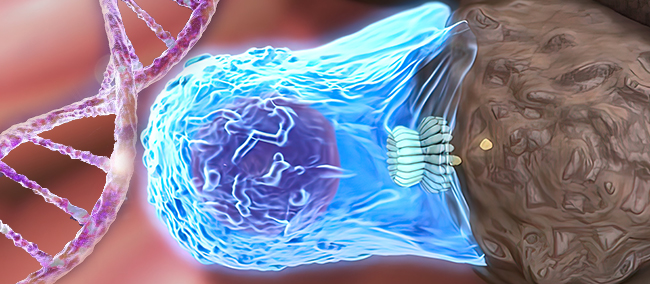
One remarkable trait of the immune system is its ability to remember past encounters with harmful pathogens, like viruses, parasites, and bacteria. The memory of these foreign agents, or “antigens” as they are called in scientific terms, allows for a swifter, more effective response if they happen to reappear. While immune memory is the basis of how vaccines work, the intricate underlying mechanisms and the causes of dysfunctional immune responses remain areas of active scientific exploration.
In a recent study published in Science Immunology, a group of researchers from Erasmus University Medical Center (EMC) and the Josep Carreras Leukaemia Research Institute (IJC) have shed new light on the phenomenon of immune memory using advanced methodologies in the area of epigenetics. More specifically, they examined how the structural organization of chromatin aids in the rapid recall of memory within human T helper 2 (TH2) cells. TH2 cells activate and uphold the humoral immune response using antibodies against parasites, bacteria, allergens, and toxins.
Epigenetic pathways play a significant role in shaping immune system development and function. Over recent decades, a growing body of research has aimed to unravel the connection between epigenetic modifications and the emergence of autoimmune disorders. Epigenetic mechanisms, including DNA methylation, histone modifications, and noncoding RNAs, primarily control gene expression and play a central role in the onset of autoimmune conditions.
In this study, Dr. Ralph Stadhouders (EMC) and Dr. Gregoire Stik (IJC), alongside first-author Anne Onrust-van Schoonhoven (EMC) and their team, analyzed the response of immune cells. They compared cells that had never encountered an antigen (naïve cells) with cells previously exposed to an antigen (memory cells) and exhibiting some recognition.
What they found was that memory cells, unlike naïve cells, carry a specific epigenetic signature that allows them to activate a crucial set of genes required for an earlier immune response. These key genes were observed to have enhanced interaction with the cell’s machinery, particularly with AP-1 transcription factors, which are crucial in controlling gene activity within the nucleus during T-cell activation.
In addition, the researchers found that the arrangement of DNA inside the cell isn’t random; instead, it reflects an activated state. Analyzing the three-dimensional distribution of DNA within the nucleus, they identified differing chromatin structures between naïve and memory immune cells. These genes were observed to be grouped together and under the same regulatory regions known as enhancers.
The combination of the distinct epigenetic signature and the unique chromatin positioning indicates that the genes within memory cells are prepped and poised to mount an early response against recognized invaders.
While much of the research was concentrated on studying healthy cells, the team was also interested in whether any of the discovered mechanisms were altered in diseases caused by an overactive or imbalanced immune system. Thus, they chose to analyze immune cells from individuals with chronic asthma. In the case of asthma, an abundance of immune factors is produced in response to stimuli that shouldn’t normally cause such a reaction, leading to inflammation of the airways.
As expected, the researchers observed an excessive activation and premature priming of the circuits essential for a rapid and potent immune response in the resting memory T-cells of asthma patients. This suggests that disrupted transcriptional control of recall genes might be responsible for driving chronic inflammation.
Although more research is needed to fully understand how both normal and abnormal immune responses work, discoveries like these are opening the door to exciting possibilities in medicine. These breakthroughs could lead to advanced treatments targeting issues where the immune system falters, such as autoimmune diseases and cancer. As researchers delve deeper into these mechanisms, they’re shaping a future where epigenetics holds the potential to create more effective and precise treatments for various health problems.
Source: Anne Onrust-van Schoonhoven, et al. 3D chromatin reprogramming primes human memory T H 2 cells for rapid recall and pathogenic dysfunction. Science Immunology, Jul 7, 2023.
Reference: Immune memory is achieved by epigenetic and topological rearrangements of DNA in immune cells. Josep Carreras Leukaemia Research Institute. July 11, 2023.

